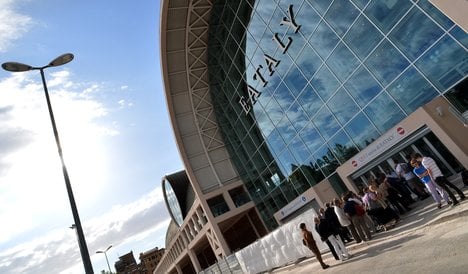In a list largely populated by app-based startups, such as Uber, and established brands widely regarded as trailblazers, including Apple, the inclusion of the gourmet Italian supermarket in 23rd place might raise a few eyebrows.
Forbes described “disruptive” brands as those which “grow in leaps and bounds, changing the trajectory of consumers’ viewpoint of the brand and the marketplace”.
The company, headquartered in the Lingotto area of Turin, said in a statement that it is “delighted to be the only Italian brand on the list…Disruptive brands destroy old frameworks and involve clients by anticipating trends and allowing them to feel like part of the company.”
But Eataly has been shaking up the marketplace since it first opened its doors in Turin in 2007.
Inspired by the good, clean and fair philosophy of 'Slow Food' founder Carlo Petrini, the shelves of each store are stacked high with sustainably sourced, artisanal produce from Italy.
“It's a really innovative way to let the world discover true Italian food,” 24-year old Eataly shopper Chiara Arena told The Local.
“The quality is really high – and at the moment there is so much 'fake' Italian stuff out there: it's great that foreigners have a place to go to discover what real Italian food is all about – even if the products are a bit pricey.”
But Eataly is more than just a luxury supermarket, and its success is in part due to the fact that it strives to provides shoppers with an all-round food experience.
Avid foodies don't just browse Eataly's shelves for regional olive oil varieties, exquisite cheeses, cured meats and preserves, they also dine at the restaurant, buy cooking equipment or pep themselves up with a freshly roasted Italian coffee and some real Italian gelato.
This blend has transformed Eataly from a single store in Turin to a network of 28 stores worldwide, which boasted a turnover of €300 million in 2014 in under 10 years.
At present, the majority of Eataly stores (16) are in Italy but earlier this year founder Oscar Farinetti, announced plans for a global expansion.
Eataly has a number flagship international stores, notably in Seoul, New York, Tokyo and Istanbul but by 2018 the brand will be present in most of the world's biggest cities.
London, Hong Kong, Paris, Mexico City and Moscow will all see stores open over the next two years, transforming the company into a truly global brand.
“Our aim is to continually challenge consumer habits,” the company said.
Its imminent arrival in London has many shoppers who know the brand salivating at the thought. But it also provides the company with a new set of challenges.
“Its arrival in England could definitely change consumer trends for the better,” said Rome-based Englishman Jonathan Moody, who discovered the store in Italy two years ago and is now an avid shopper.
But he believes the brand's international expansion should go hand in hand with widening the range of products on offer to include more local flavours.
“For example in the UK perhaps it should promote some British products and offer a channel for British producers to sell their wares. Otherwise it's just a glorified supermarket selling high-end Italian goods.”




 Please whitelist us to continue reading.
Please whitelist us to continue reading.
Member comments